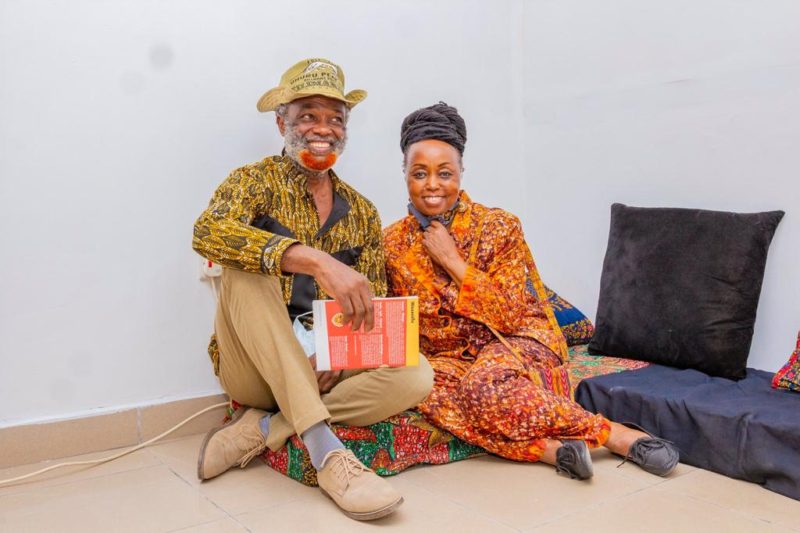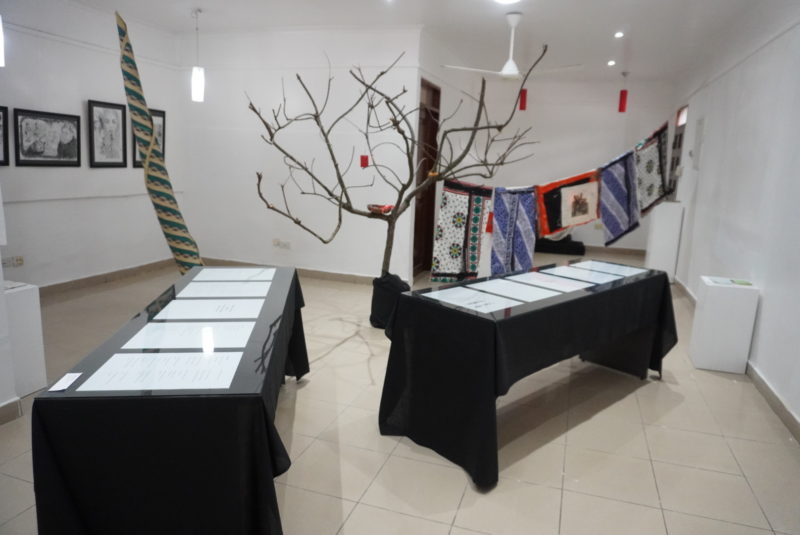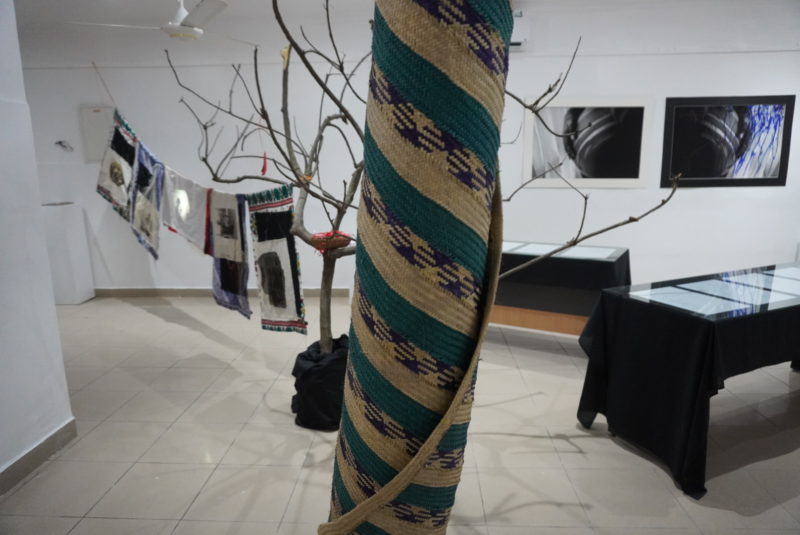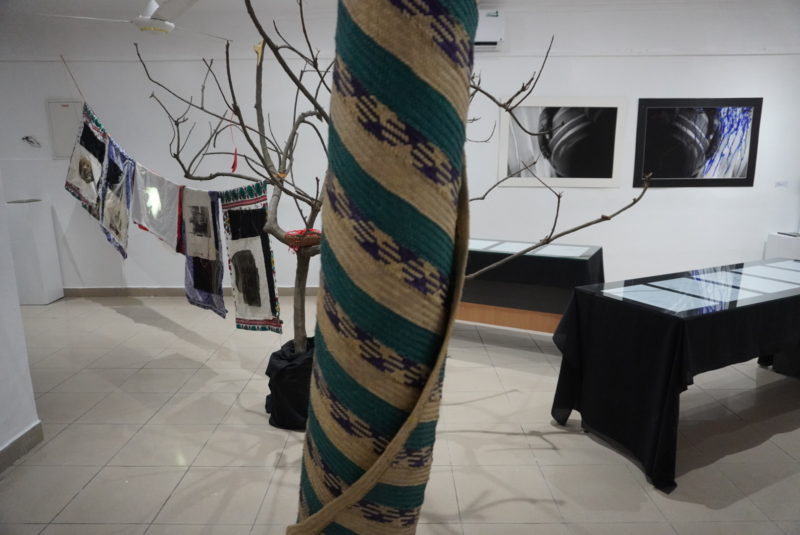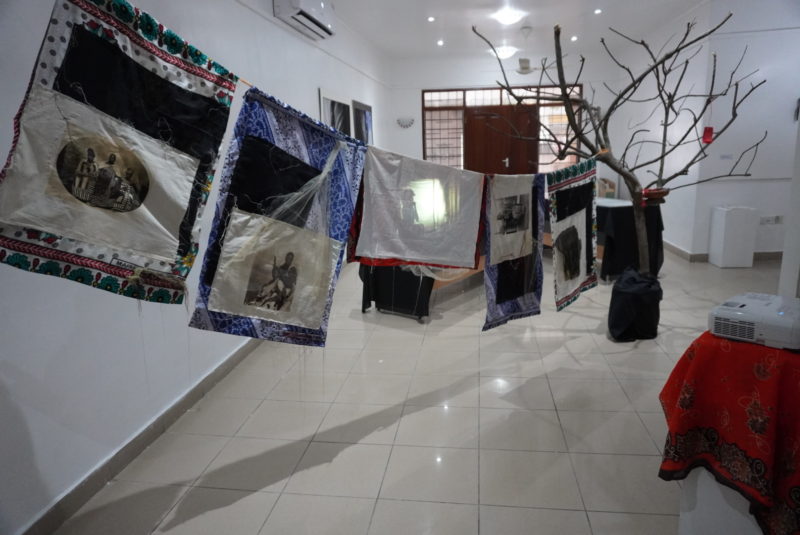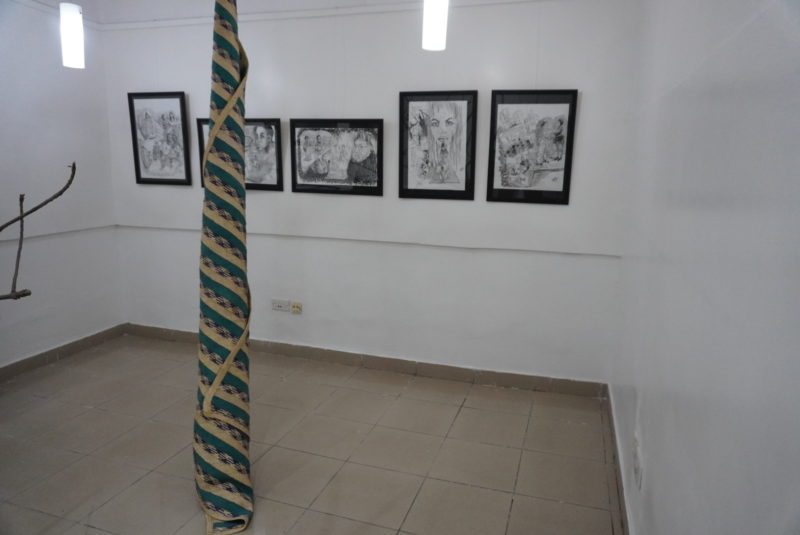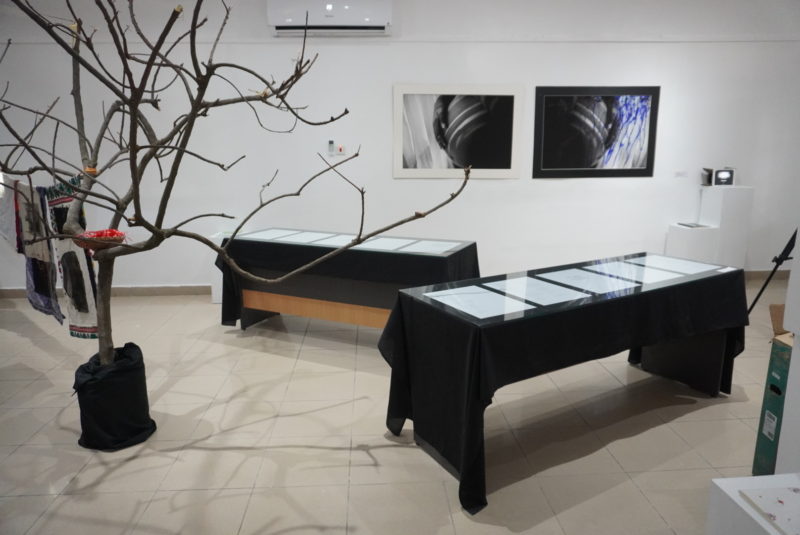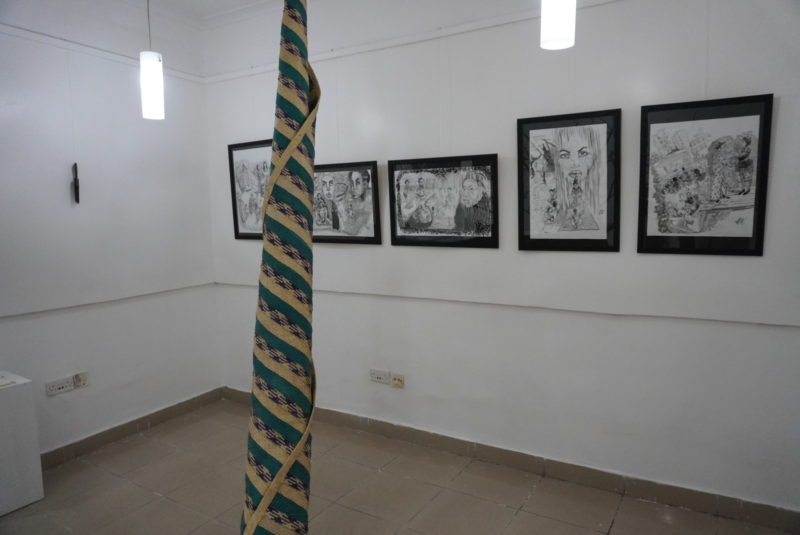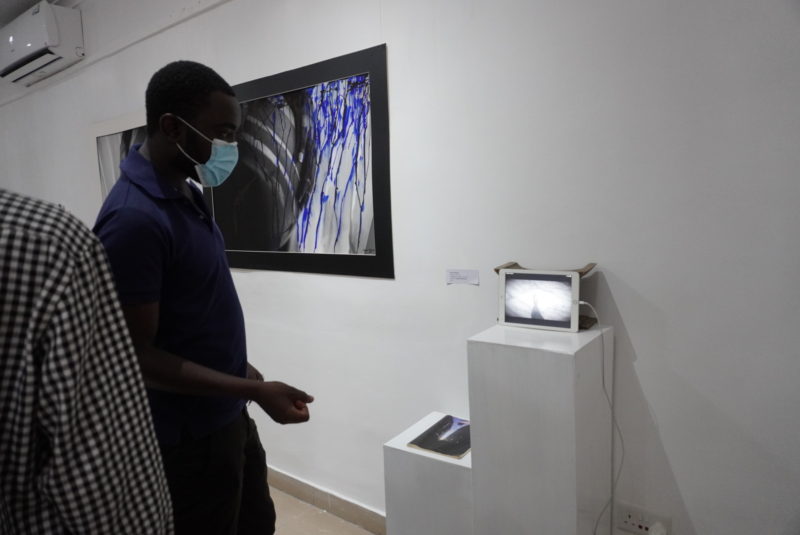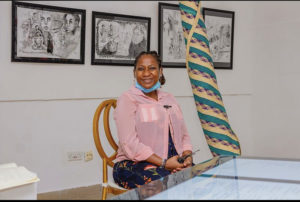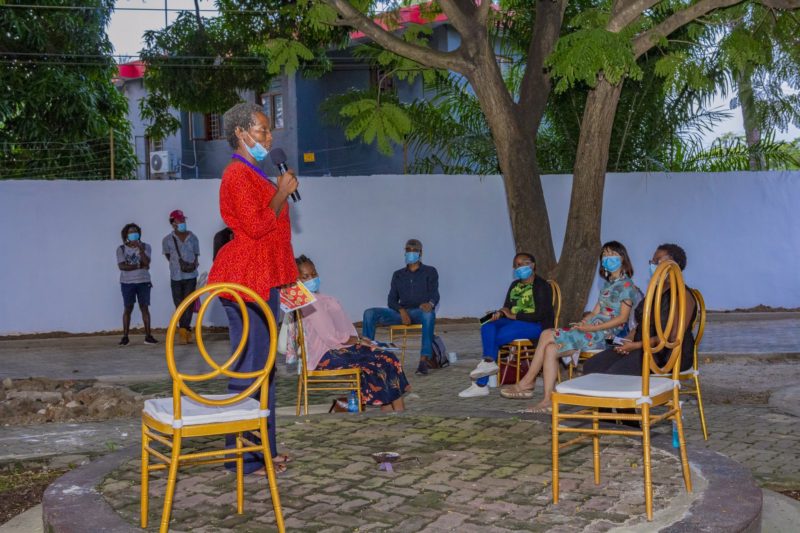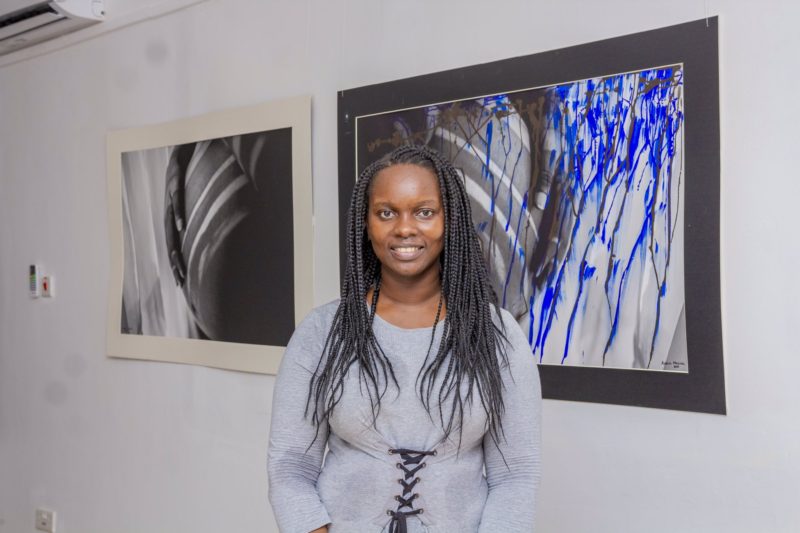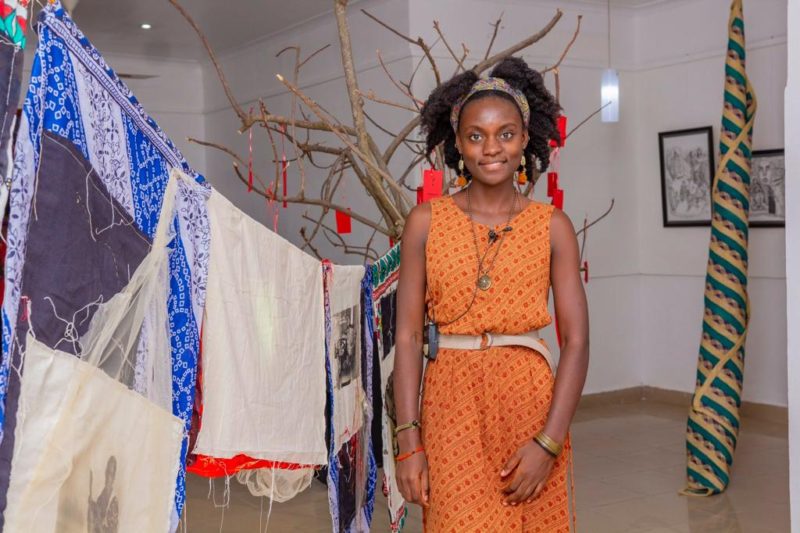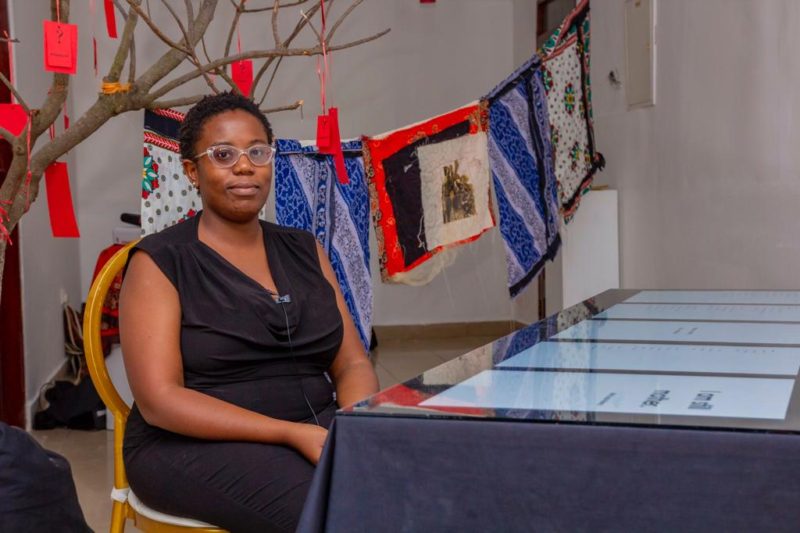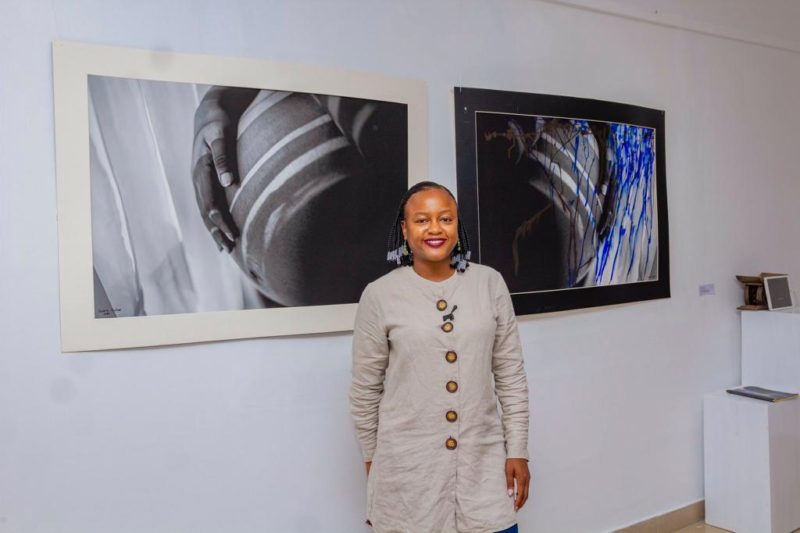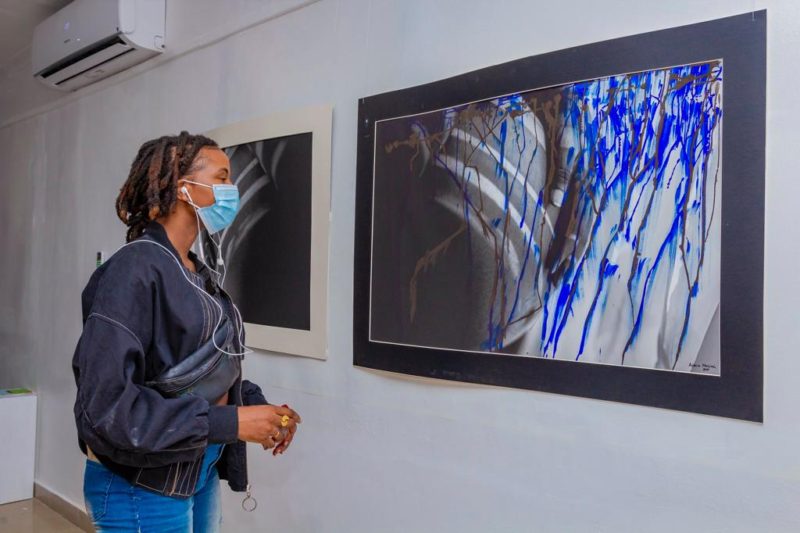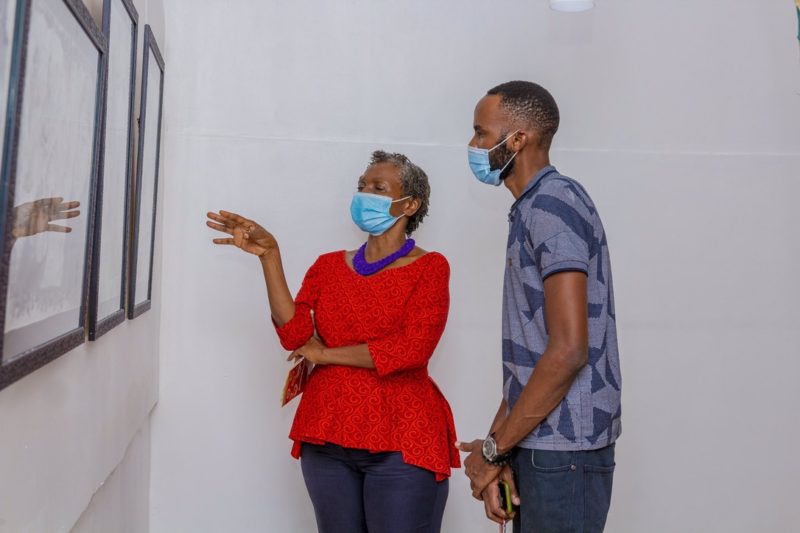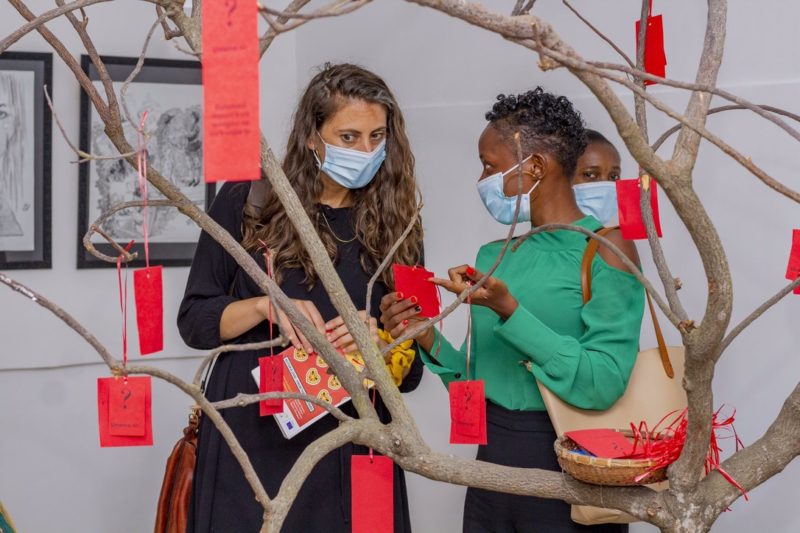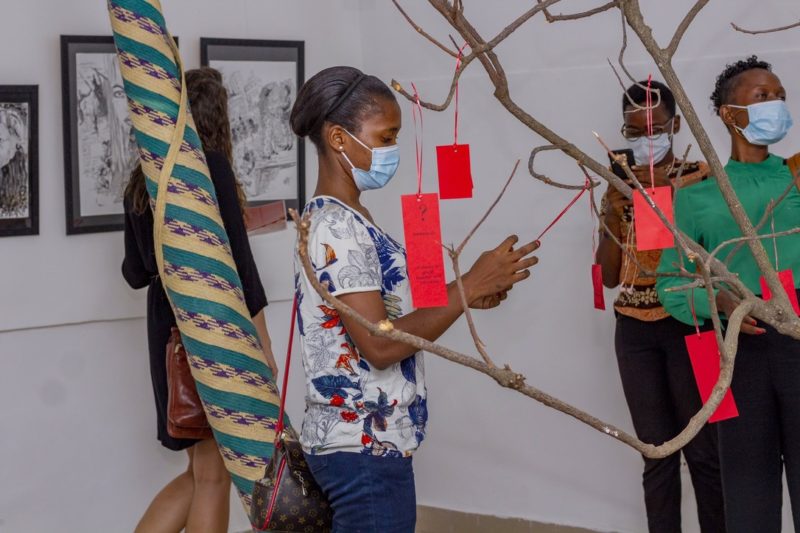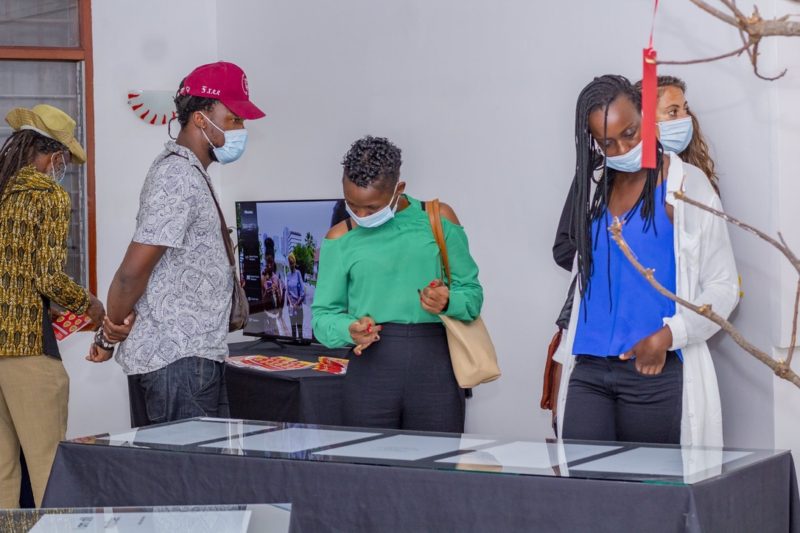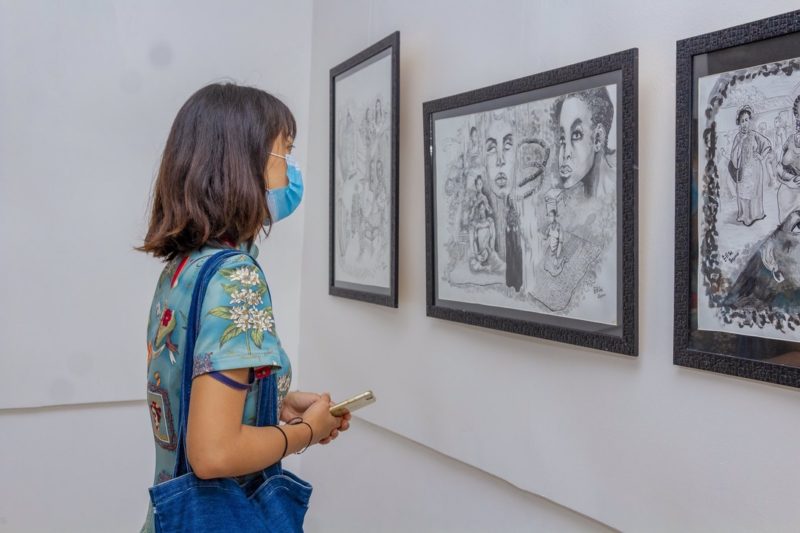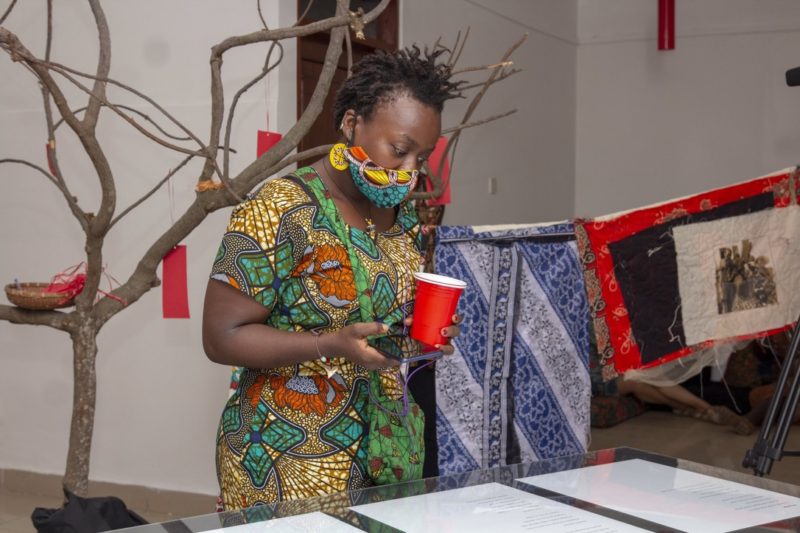Kutoka Uani/From the Backyard: A Proposition
_____
ua n (nyua), U-N-, root maua
Backyard, Fence
Context: Relating to Swahili Homes. Traditionally a backyard, often with an enclosure, and designated as women’s space (of ‘seclusion’ and ‘safety’ from men’s straying eyes).
_____
Notes on the proposition.
-To frame this exhibition conceptually, I start these notes with my Bibi Mkunde’s most famous cake recipe:
Mix 1 cup of sugar and 1 cup of butter, whisking until the sugar is fluffy and soft. This process requires a strong hand. It represented growth and as kids, many of us always wished to grow strong enough to one day whisk sugar and butter as finely as Bibi Mkunde could, using a fork or a wooden spoon. Next, gently fold in 3 eggs, one at a time. Before adding the first egg, you have to decide which direction your hand is going to stir – clockwise or anticlockwise. Bibi always insisted that the secret to a good cake is to never change the direction to which your hand is stirring when mixing in the eggs. Needless to say, this process was extremely tiring to a young hand.
Once you have mixed all three eggs, in comes 2 cups of baking flour, also one cup at a time. With each cup, a teaspoon of baking powder is mixed in with the flour first before it is slowly sifted into the bowl. At this stage, we substitute the forks and wooden spoons a knife to gently fold in the flour until it mixes well into a thick and consistent batter. Next, 1 cup of milk or water is added to soften the batter. And finally, for flavor, we add some lemon zest or vanilla (if you have access to it). However, vanilla is a luxury she couldn’t easily afford, hence lemon zest was always a signature flavoring for Bibi’s baking.
This is a plain cake (to some, generic even). But to many of us in my family, this cake represents so much in a single bite. With a single bite of this cake…
A feeling of nostalgia is evoked as I am immediately transported back to Bibi’s kitchen; which we treat as an intimate space where bonding (between members of the family) and passing down of stories, histories, recipes, as well as the spirit of generosity, occur.
I am reminded of my growth over the years—from that girl who was never strong enough to whisk sugar and butter well—which is by and large attributed to the people who surrounded me then, and the even larger community (of mostly women) who surround me now.
And, the spirit of community, and of sharing is evoked—of lending a helping hand when one falters. When I faltered through some of the more challenging stages of making this cake, it was always my sister or Mama Mdogo who came to my rescue; as is the case today where I have a growing number of sisters and mamas who continue to have my back.
– Kutoka Uani/From the Backyard is both an exhibition and a (collective) proposition which takes its cue from the mutual interdependence of communal living, the value of sharing life intergenerationally, and the art of handing down (of stories, histories, names, gifts, skills, recipes, clothes, etc.); and, which borrows from various kitchens, nyua, and other so called ‘women’s spaces’—the likes of Bibi Mkunde’s kitchen—and the spirit of togetherness evoked by the ‘offerings’ which come out of such spaces (for example, in a single bite of Bibi Mkunde’s famous cake).
-Exhibited are four artists who have blended the visual and the textual to create a patchwork of stories, histories, and voices gathered through processes of both listening, making sense, relating to, as well as responding to situatedness and circumstances.
-We (collectively as artists and curators of this exhibition) are offering Kutoka Uani/From the Backyard as a proposition which is double meaning in nature. On the one hand, we are unearthing and recognizing the backyard (and other ‘women’s spaces’) as living archives rich with (hi)stories and knowledges which are often trivialized, suppressed, and/or muted to near oblivion, due to their mundane nature. On the other hand, we are ‘calling out’ the retrogressive role of such spaces and interrogating the patriarchal notions of the place which women occupy/are expected to occupy within the hierarchy of knowledge, agency and space. It is therefore a proposition representing both a reclamation and a purging of the ideological underpinnings of such spaces—Kutoka Uani can also translate as coming out of/leaving behind (or freeing) the ‘traditional’ Uani/ ‘women’s space’ notion of ‘seclusion and confinement’.
–Kutoka Uani/From the Backyard as a proposition also represents both a beginning and an ending.
As the final output to the Uliza Wahenga Dada! project which was co-conceived by myself, Soma, and Bookstop Sanaa (BSS); the exhibition culminates as an ending to a journey which started with six artists (selected from a shortlist of 10) who, together with the project coordinators, had set out to search for, and excavate missing evidence of women’s contributions across time—missing from the cultural and political memories of Dar es Salaam and its coastal vicinity. The Indian ocean became central to the project, as both an archive and a point of reference. Through a year and a half, the participating artists were trained and mentored on the various methodologies (as well as on the ethics) of carrying (hi)stories into their practices. During this time, they also learned from and with each other through eating together, walking together, growing, and being vulnerable (opening up, laughing and crying) together. They discovered together (through excursions) and collaborated to in the end merge with a ‘single’ story, unearthed in consultation with ancestress’ and told from four different vantage points.
Since, former ideas and projects always manage to resurface and make their way into future inquiries; our recurring (physical and conceptual) encounters with the ua throughout the conversations, excavations, and various interlocutions of the Uliza Wahenga Dada! project have continued to ring in our minds to a point where they have resurfaced as a new project carrying Uani as its working title. This exhibition therefore opens the year as our first public ua and represents the beginning of Soma’s new project which sets out to create a curatorial reclamation and artistic recreation of the indigenous knowledge powerhouse that is Uani.
-To further secure this exhibition within its conceptual grounding, I end these notes with another ‘offering’, this time from my Mama, Demere:
“Like prisoners who use their knuckles to plot away their escape, so do women. Painstakingly. Generation after generation. They weave a narrative of escape. Strand by strand.
At Uani they are confined,
As tradition dictates.
Some perfect the art of pleasing,
And that of holding each other back.
Others paint a canvas of their escape,
Stroke by stroke.
Amidst daily chores,
Knuckles bleed,
Tongues twist,
Escape routes unravel,
On raffia strands of mats and fans,
Plotted and spelt out,
From generation to generation”
– Curatorial notes prepared by Rehema Chachage
______
Exhibition curated by: Demere Kitunga, Rehema Chachage, and Sarita Mamseri
Exhibited Artists: Abigail Kiwelu, Asteria Malinzi, Liberatha Alibalio, and Ngollo Mlengeya
Honorary mention: Hawa Ally, and Priscilla Mlay who are the last two (to make a total of 6) Uliza Wahenga Dada! project artists, but unfortunately could not participate in the final exhibition.
Many thanks to Valeri Asiimwe Amani (our project coordinator/assistant curator and artist liaison), Rahma Maabad (who was our short-term project coordinator), and Jesse Gerald who is our curator for the Public opening and program.
Artists’ Statements
Asteria Malinzi
You have been warned. Great restlessness watches eternities pass in the flowing manner of streams. You have been warned; with deceptive softness waves carry histories into the distance on tides of loss, and thrash to the sound of forgetting. You have been warned; vastness without scent nor warmth stalks the world in dances of advance and retreat. You have been warned. All the great thoughts of light must first be authored by the water.
Liberatha Alibalio
The Mender’s rhythm exists between worlds of which just two perhaps can be articulated in a tone consistent with dominant narratives: There is trade, where with little irony the menders care, occupying time dismissed, comes to be displayed as welcoming face of colorful new worlds to be seen and owned. And there is labour, hours of nurturing, healing, growing, and sharing that are equally dismissed while remaining prevalent in notions of home across existence. In these and many cases the Mender’s work is vocalized by the very history demanding her silence and yet singing in thread, she weaves scenes and secrets, activating memory in ritual and staging her presence in the layers of history.
Abigail Kiwelu
The night listens intently, in the room Asu forges her ritual. She unfolds her mat with the ruffle of a bird geared for flight. The comb gleams in her hand with an inward, starry depth. Moving to the center Asu holds space in her palm on a mat made of time with questions on her mind. She sees in these questions sections of a great unkindness borne by womankind which she awaits to break with the life-giving words of her ancestors. She taps her comb, the wind rises, and a great light appears.
Ngollo Mlengeya
These echoes, spanning generations, dare to contend with the universally divine concept of Motherhood. They are incantations, stemming from Mother, an ‘icon of wholeness’, told in segments recounting a journey towards agency through scenes noting the guilt, absences, trauma, tension, and untold silence that accompany a motherhood defined by external factors. Here we understand an imposed self is a form of forgetting. But here also we see that encased in each of us adorned by this word; contrary to the prevailing norms and expectation; is an eternal hum of collective understanding by all who have borne the name, Mother, the seeds of which are planted in memory, community, ritual, self-acceptance and love.


